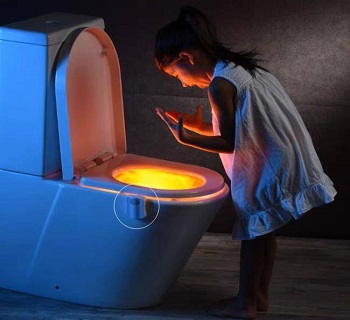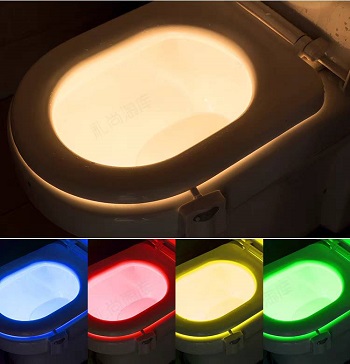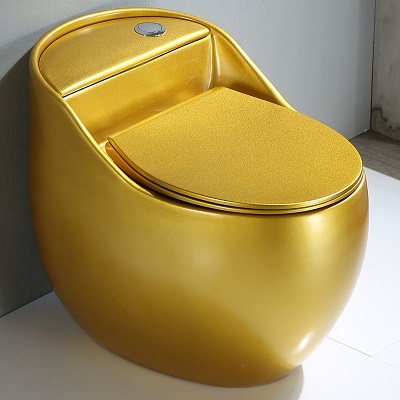The allure of DIY projects lies in the opportunity to infuse your personal touch into everyday objects, transforming them from mere items into expressions of creativity. Creating a DIY toilet light is a prime example of this, offering a chance to illuminate your bathroom with a custom-made fixture that showcases your artistic flair.
In this guide, we’ll walk you through the steps of making your own unique toilet light.

Materials You’ll Need
Before Crafting the toilet light, we need to prepare the following materials.
LED Light Strips
These will form the core illumination of your DIY toilet light. They come in various lengths and colors, allowing you to choose the perfect fit for your space.
Battery Pack or Power Source
Depending on your preference, you can opt for a battery pack or connect your LED strips to an existing power source.
Adhesive or Mounting Hardware
To affix the LED strips to your desired location, you’ll need adhesive backing or mounting hardware such as clips or brackets.
Wire Cutters and Strippers
These tools are essential for cutting and preparing the LED strips’ wires.
Optional
Controller or Dimmer: If you want to adjust the brightness or color of your DIY toilet light, you might consider adding a controller or dimmer to your setup.
Step-by-Step Guide
After the preparation of crafting materials, you can craft your own toilet lights according to the following.
Plan Your Design
Decide where you want to place the LED strips in your bathroom. Common locations include beneath the toilet seat or along the base of the sink cabinet.
Measure and Cut
Measure the length of the area you want to illuminate and cut your LED strips accordingly. Most LED strips can be cut at specific intervals without damaging the functionality.
Prepare the Wires
If needed, strip the ends of the wires on your LED strips to expose the conducting part.
Connect the Power Source
Attach the wires from the LED strips to the appropriate terminals on your battery pack or power source. Make sure to match positive (+) with positive and negative (-) with negative.
Secure LED Strips
Use adhesive backing or mounting hardware to attach the LED strips to your chosen location. Ensure that the strips are evenly spaced and properly adhered.
Test Your Creation
Before finalizing the installation, test the lights to ensure they are functioning as desired. If you have a controller or dimmer, test its functionality as well.
Install and EnjoyOnce you’re satisfied with the setup, secure the battery pack or power source in a convenient location. Turn off the lights in your bathroom and bask in the glow of your DIY toilet light.
Customization and Beyond
The beauty of making a DIY toilet light lies in the endless possibilities for customization. If you’re feeling adventurous, you can explore additional features such as motion sensors to automate the lighting, or even integrate smart technology for remote control and color changing.

Conclusion
Crafting your own DIY toilet light is not just about shedding light on your bathroom—it’s about shedding light on your creativity and resourcefulness. With a handful of materials and a dash of ingenuity, you can transform a simple bathroom necessity into a personalized masterpiece.
As you step back and admire your handiwork, you’ll have more than just a toilet light; you’ll have a testament to your ability to bring light and innovation into your living spaces.

